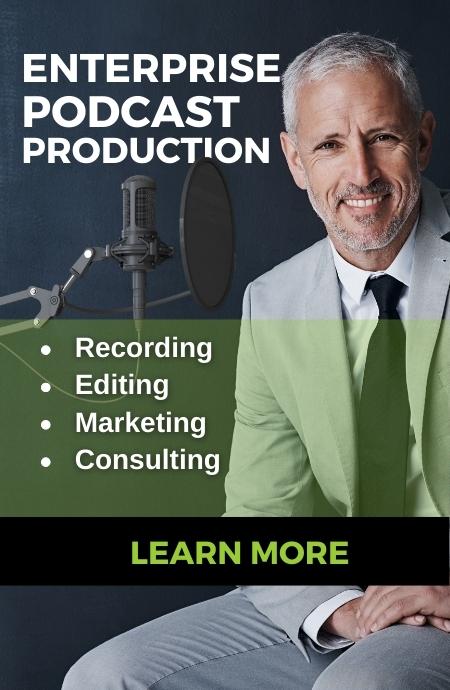This article will boost your list of video marketing ideas. There are different marketing video types for business which you can use as part of your content marketing strategy. Neglecting to use video for business in the 21st century is a mistake that will leave many, late-to-the-game companies behind.
Statistics show that in 2019, video content will surpass 80% of all customer-oriented traffic circulating on the internet. Now is the time to figure out how you will use video and understand how video can positively impact all stages of your sales cycle.
What’s more, research indicates that video continues to be highly effective across multiple online channels with an amazing 82% of businesses reported greater investments in video in 2018. Repeatedly, B2B marketers report bringing far better conversion rates than any other type of content. Besides, 90% also say that video is becoming vital for their marketing strategy, while 23% of sales teams are also incorporating video into their sales cycle.
The point is that video for business is booming, and the quicker your organization will be part of it, the better it will be down the line. That said, here are seven types of video for business as well as when to use them for maximum effect.
Bonus Update: Live Streaming Video
As an update to this article – the topic cannot be complete without the mention of Live Streaming.
Livestreaming provides a new platform to reach future and existing customers. By going live, companies can boost their engagement, build trusting relationships with their audience, and elevate their image. And since it’s so accessible, making use of this marketing model is practically a no-brainer.
Aside from these benefits, live streaming provides a sense of excitement to the audience. Inviting your community to tune in to the latest live stream video will make your customers feel inclusive and exclusive simultaneously, especially if they are allowed to interact and submit questions.
1. Live Motion Demonstrations
Live motion demonstrations are the most professional types of video. And due to technology advances, often can be produced for less than animations. These are great tools for connecting with your audience especially when running a more personal type of business such as a restaurant or consulting firm. They are also the best at connecting with the human element of a company in a way that animation cannot.
The reason for this is that people like seeing other people, forming an emotional connection and allowing them to better connect with the story told. Live motion demonstrations work best during the customer’s consideration stage of the buyer’s journey when they’re in the market for potential companies with which to do business.
Live Motion video also works well for a software company that either doesn’t want to do full-screen captures or who only have beta versions of their software. Key features can be added as overlays or call-outs to get the point across without actually showing the screen.
Demonstration videos need to show the essential steps of the process, guiding your prospects through their decision-making process. The best place to put these live demonstration videos is on the company’s homepage, main landing pages, YouTube, as well as other initial points of contact with potential customers such as social media.
2. Live Motion/Screen Capture Mix
Just because your video is primarily a screen capture of your software product, it doesn’t mean that you can’t add a brief human element. The live motion and screen-capture mix type video are useful when you are presenting a software product, as well as a step-by-step tutorial of its features and how to use it.
The beauty of these videos is that you are allowed to present a human element to connect with the audience, while the video does not hinge on the performance of the person.
These specific videos should place on the product’s description page on the website, YouTube, as well as other such places where people want to see your software product in action. Together with screen captures, these types of live motion demonstrations allow you to use visuals to illustrate your points better.
3. Animations
Animations can come as 2D lines or even full 3D renderings and have a tremendous range in cost. Due to the growth of online video creation platforms that allow you to make fast videos from templates, companies with in house marketing teams can crank out videos quickly at a low cost.
The downside is the fact that they are templated and competitors can easily look just like you. Even agencies use these sites, but because of higher skill sets, can add creative value that those not familiar with the platforms don’t usually achieve.
3D and fully customized videos with original drawings and shapes can be more unique, fine-tuned to your message, and not appear as cookie cutter. This customization comes at a cost, however, and often are more pricey than live motion videos with real people.
2D Example:
3D Example:
There are several advantages that animations have over other types of video content. For starters, they allow for more creativity than regular video, making them more engaging and easier to use as well as to explain more complicated procedures or products. It’s for this reason why many businesses regularly use animations as explainer videos.
Thanks to their versatility, animations can have a wide range of applications and can be used throughout most of the buyer’s journey. Aside from making excellent product explainer videos during the consideration stage, animations can also be used as so-called hub videos.
These can be either explanation or entertainment videos, which answer questions that customers are actively searching for online. These types of animation videos work well on social media sites, as well as your website.
4. Customer Testimonials
Customer testimonials are a powerful tool to have at your disposal. As a form of social proof, testimonials are a way of having other people do the bragging on your behalf. People typically turn to online reviews, word-of-mouth, and other such examples of social proof as a means of understanding what a company is about, as well as how good their products and services are.
Having a happy customer tell your audience how your product has helped them in their personal or professional life will get you a long way in gaining their business. In general, people draw towards a humble company. However, when a company continually brags about its product, it doesn’t appear particularly humble.
Nevertheless, by using testimonial videos, you will be sure to take advantage of draw people towards your product. Testimonials were shown to have the best effect during the decision-making stage of the buyer’s journey. It is after they’ve come in contact with your brand and product as well as after the consideration stage when they’ve defined their problem and are looking into all the available options to solve it.
Video testimonials will allow your leads to see and hear from real, live people, reassuring them that your product is the best solution for their problem. They also help bolster your brand, increasing their confidence to decide on your product or service.
5. Thought Leadership Videos
Another great use of video content for business is to interview thought leaders in your respective industry. These can be people from within your organization, talking about the industry, service, or product, or it could be another expert speaking at large about future trends, market insights, etc.
Thought leadership videos could be used in both the awareness and consideration stages of the buyer’s journey. When the customer comes in contact with your brand and product for the first time, thought leadership videos can inform the audience about the benefits of your product, as a whole.
At the consideration stage, on the other hand, thought leadership videos should be more focused on solving a potential customer’s problem, and not so much about the sales pitch. After watching the video, the customer should feel more armed with information when making the decision. They should also develop a sense of trust in your organization as a result.
It’s important to know that in both scenarios, thought leadership videos work well on and off your website. You should include them on your product and landing pages, as well as on Facebook, YouTube, or other such initial points of contact.
6. Training Videos
Training videos can serve as both an asset to your internal company members as well as for customers using your products. Even though the pressure may be a little less for internal videos, there is no need to settle for less quality. Both internal and external videos can be created without breaking the bank.
The best part is that your on-camera talent comes from your own employees. Plus, you either already have documentation that can become a script, or the video can serve as a supplement to written material for visual learners.
Internal company videos can be used for:
- Automating Onboarding
- Training on new product lines
- Training on new software or procedures
- Learning Management Systems
- Communication from Corporate Leadership
External training videos can be used for:
- Product usage tips
- Frequently Asked Questions videos
- Product update announcements
- New customer onboarding
Here is a great example from Hubspot, where they announce their new product updates while at the same time build interest in the product, and give existing customers insight as to what new functionality their product provides.
7. Humor and Entertainment Video
There is no better way to make a human connection than humor. Humor can also be a way to explain a complicated solution by relating it to activities and scenarios that your audience can understand. This method has been utilized and proven in the television industry for decades as evidenced by the frenzy to watch Super Bowl commercials.
Here is an example of how a company used humor to personify a complicated software offering:
Takeaway
It’s important to keep in mind that Google has highlighted how-to videos as the central source for 65% of millennials who want to quickly pick up a new skill or learn how to use a product. How-to-videos such as these address a question that prospects might ask online.
The video is the most emotional medium that can help you better connect with your audience. They’re also more entertaining, and easier to understand, guiding your customers through their entire buyer’s journey, finally deciding on your product.
Want to learn more? Talk to a professional Content Monsta!
- How to Measure Content Marketing ROIContent marketing ROI is often miscalculated because it is based on …
- Why Pay for Remote Video ProductionIf you already have someone on your team who can edit …
- Remote Video Recording – Desktop Video Kit Equipment SuggestionsTo dramatically improve the video and audio of your desktop video …





